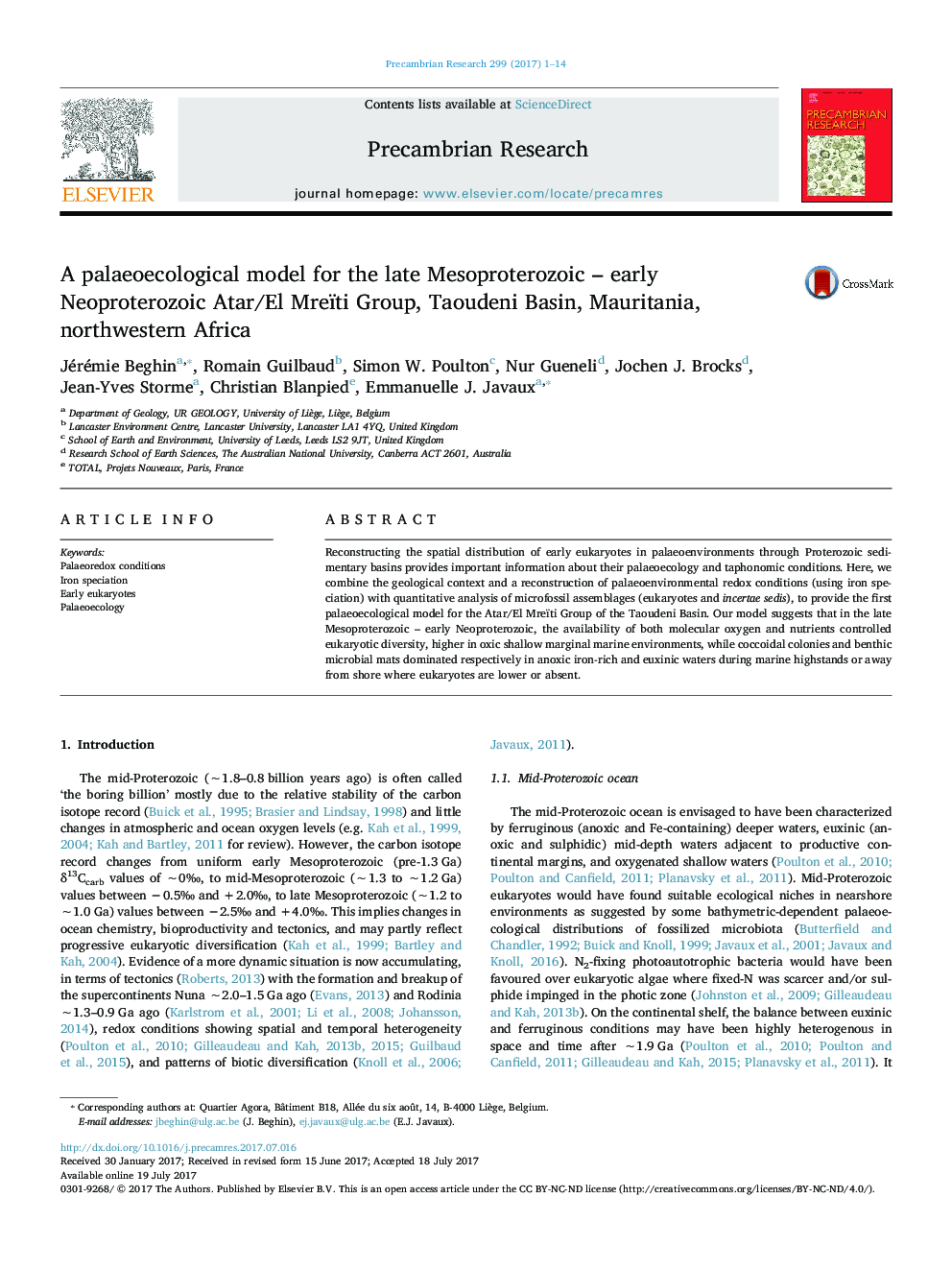| Article ID | Journal | Published Year | Pages | File Type |
|---|---|---|---|---|
| 5784704 | Precambrian Research | 2017 | 14 Pages |
Abstract
Reconstructing the spatial distribution of early eukaryotes in palaeoenvironments through Proterozoic sedimentary basins provides important information about their palaeoecology and taphonomic conditions. Here, we combine the geological context and a reconstruction of palaeoenvironmental redox conditions (using iron speciation) with quantitative analysis of microfossil assemblages (eukaryotes and incertae sedis), to provide the first palaeoecological model for the Atar/El Mreïti Group of the Taoudeni Basin. Our model suggests that in the late Mesoproterozoic - early Neoproterozoic, the availability of both molecular oxygen and nutrients controlled eukaryotic diversity, higher in oxic shallow marginal marine environments, while coccoidal colonies and benthic microbial mats dominated respectively in anoxic iron-rich and euxinic waters during marine highstands or away from shore where eukaryotes are lower or absent.
Keywords
Related Topics
Physical Sciences and Engineering
Earth and Planetary Sciences
Geochemistry and Petrology
Authors
Jérémie Beghin, Romain Guilbaud, Simon W. Poulton, Nur Gueneli, Jochen J. Brocks, Jean-Yves Storme, Christian Blanpied, Emmanuelle J. Javaux,
